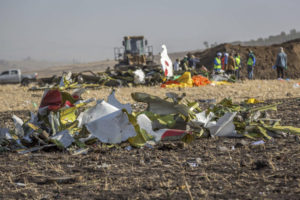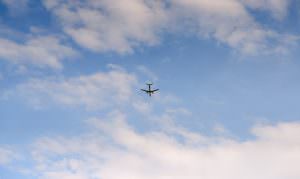Trump Approves Test Program to Expand Domestic Drone Flights
The presidential memo would allow exemptions from current safety rules so communities could move ahead with testing of drone operations.WASHINGTON—Some Americans could see a lot more drones flying around their communities as the result of a Trump administration test program to increase government and commercial use of the unmanned aircraft.
President Donald Trump gave the go-ahead Wednesday, signing a directive intended to increase the number and complexity of drone flights.
The presidential memo would allow exemptions from current safety rules so communities could move ahead with testing of drone operations.
States, communities and tribes selected to participate would devise their own trial programs in partnership with government and industry drone users. The administration anticipates approving at least five applications, but there is no limit on the number of communities that can join.
The Federal Aviation Administration would review each program. The agency would grant waivers, if necessary, to rules that now restrict drone operations. Examples include prohibitions on flights over people, nighttime flights and flights beyond the line of sight of the drone operator.
Among the things that could be tested are package deliveries; the reliability and security of data links between pilot and aircraft; and technology to prevent collisions between drones and other aircraft and to detect and counter drones flying in restricted areas.
The trial program will collect data on drone operations that will aid the government’s effort to develop a separate air traffic control system for low-flying unmanned aircraft, Michael Kratsios of the White House Office of Science and Technology Policy told reporters in a conference call. Ultimately, the information is intended to be used to more generally expand drone flights around the country.
The test zones are expected to start going into place in about a year. The program would continue for three years after that.
The program is intended “to foster technological innovation that will be a catalyst for ideas that have the potential to change our day-to-day lives,” said Transportation Secretary Elaine Chao. She noted that drones have proven to be an especially valuable tool in emergency situations, including assessing damage from natural disasters such as the recent hurricanes and the wildfires in California.
Drone-makers and businesses that want to fly drones have pushed for looser restrictions. Trump discussed the issue with industry leaders at a White House meeting in June.
In the past two years, the FAA has registered over 1 million drones. The majority of them belong to hobbyists. There are now more registered drones than registered manned aircraft in the U.S.
Safety restrictions on drone flights have limited drone use, and U.S. technology companies seeking to test and deploy commercial drones have often done so overseas. For example, Google’s Project Wing is testing drones in Australia, and Amazon is testing drone deliveries in the United Kingdom.
“In order to maintain American leadership in this emerging industry here at home, our country needs a regulatory framework that encourages innovation while ensuring airspace safety,” Kratsios said.
Safety concerns over drones have risen recently after the collision of a civilian drone and an Army helicopter over Staten Island, New York, and the first verified collision in North America between a drone and a commercial aircraft, in Quebec City, Canada.
The test program doesn’t address complaints by local governments that low-flying drones present safety, privacy and nuisance risks. The FAA says it has the sole authority to regulate the national airspace, but some communities have passed their own restrictions.
The test program “doesn’t go far enough in protecting local control and the rights to privacy and property,” said Rep. Jason Lewis, R-Minn. He has introduced a bill to give local governments more control over drones flying under 200 feet.
But Doug Johnson, vice president of technology policy at the Consumer Technology Association, said the test program recognizes that “the federal government cannot manage policymaking and enforcement by itself” and must work with local governments.
“Public-private partnerships like those that would be created by the program are critical to realizing the economic benefits of drones,” he said.
The association, whose members include drone-makers, has estimated 3.4 million drones will be sold in the U.S. this year, 40 percent more than last year. Revenue from those sales is estimated at about $1.1 billion.
Your support matters…Independent journalism is under threat and overshadowed by heavily funded mainstream media.
You can help level the playing field. Become a member.
Your tax-deductible contribution keeps us digging beneath the headlines to give you thought-provoking, investigative reporting and analysis that unearths what's really happening- without compromise.
Give today to support our courageous, independent journalists.








You need to be a supporter to comment.
There are currently no responses to this article.
Be the first to respond.